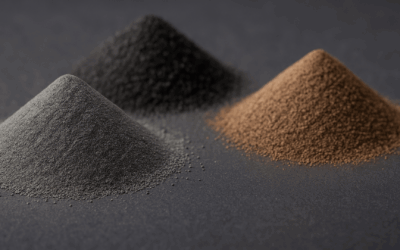As manufacturing processes evolve, businesses must adapt their models to stay competitive. One significant change in recent years has been the rise of additive manufacturing, which drastically reduces a company’s work-in-progress (WIP) accounting metric. This concept, known as Zero Work In Progress, has far-reaching financial implications for small and medium-sized manufacturers. In this article, we’ll explore the Zero WIP concept, its financial impact, and other Industry 4.0 technologies that can help further reduce WIP.
First, let’s compare the differences between the subtractive and additive manufacturing processes. Both begin with the design, move into production, may require some post-processing, and produce some waste. Here are the key differences:
- Traditional subtractive manufacturing involves removing material from a larger piece to create the final product. In contrast, additive manufacturing builds up a product layer by layer from raw materials, such as metal powders or plastic filaments.
- Additive manufacturing considers the build orientation and support structures, typically incorporating more complex geometries.
- For products needing tighter tolerances or better surface finishes, subtractive manufacturing still provides better output. Sometimes additive is used to produce the initial part, and subtractive manufacturing is done in the post-processing step.
- In general, additive produces less waste than subtractive, as most raw material is used to build the part.
These fundamental differences in the process affect the value and management of WIP inventory. In subtractive manufacturing, the value of WIP is tied to the cost of the initial material block and expenses incurred during the removal process. However, additive manufacturing increases WIP value as more material is added and the product gets closer to completion.
Let’s use GE Aviation as a real-world example of the benefits of shifting from subtractive to additive manufacturing. By adopting additive manufacturing, GE Aviation was able to reduce WIP inventory in the following ways:
- Reduce lead times from 2-3 months to just a few days, reducing the amount of inventory in the production process.
- Since the parts are developed on demand, it reduces the need to keep excess inventory in stock.
- The complexity of the production process was significantly reduced. These increases in efficiency further reduce WIP levels.
- They were able to consolidate 20 parts into a single component. Reducing the number of intermediate parts and assemblies in progress also reduces WIP.
So, what does this do to the company’s financials? Typically, companies will first notice a change on their income statement, e.g., an increase in their gross margin and EBITDA. However, there can be positive effects on other financial reports. These can include improvements to the operating cash flow because there is less cash tied up in inventory or better utilization of company assets on the balance sheet, i.e., improved Asset Turnover Ratio.
Reducing WIP through additive manufacturing can also improve other metrics, such as debt-to-equity ratios and overall firm value. If a company can significantly generate more net income year-over-year from the changes, the company’s equity increases if all else is the same. For companies looking to obtain financing, an improved Debt-to-Equity ratio can be a positive sign for a bank. And whether a manufacturer is looking to sell the company to an outside investor or their employees, improvements to EBITDA can increase the value of a firm if a multiplier valuation methodology is used.
Additive manufacturing isn’t the only technology that can improve WIP. Other Industry 4.0 technologies like advanced robotics and automation can streamline production processes, minimizing bottlenecks and improving throughput. The Internet of Things (IoT) enables real-time tracking and monitoring of assets, leading to better inventory control and WIP management. Artificial intelligence (AI) and machine learning can optimize production schedules and resource allocation, reducing lead times and overall WIP.
Embracing Zero Work In Progress, through additive manufacturing and other Industry 4.0 technologies, can yield significant benefits for small and medium-sized manufacturers. Reduced WIP inventory leads to improved financial metrics, increased efficiency, and a more sustainable production process. However, companies must consider the challenges of implementing these technologies, such as new equipment, employee training, and potential upfront costs. By staying informed and adapting to these evolving manufacturing processes, businesses can unlock the full potential of Zero Work In Progress and thrive in the competitive landscape of modern manufacturing.
Sign up today for a free Essential Membership to Automation Alley to keep your finger on the pulse of digital transformation in Michigan and beyond.
Eric Davis is the Chief Operating Officer of Project DIAMOnD at Automation Alley, where he oversees day-to-day operations, financial stewardship, and resource allocation to keep the program running smoothly. He has extensive experience conducting due diligence on public and privately held companies, is a registered investment advisor, and held a financial role for other non-profits. He previously coached varsity football at Southgate Anderson High School. Eric earned both his MBA and BBA (Finance) from Eastern Michigan University and is a Level III candidate in the CFA Program.




